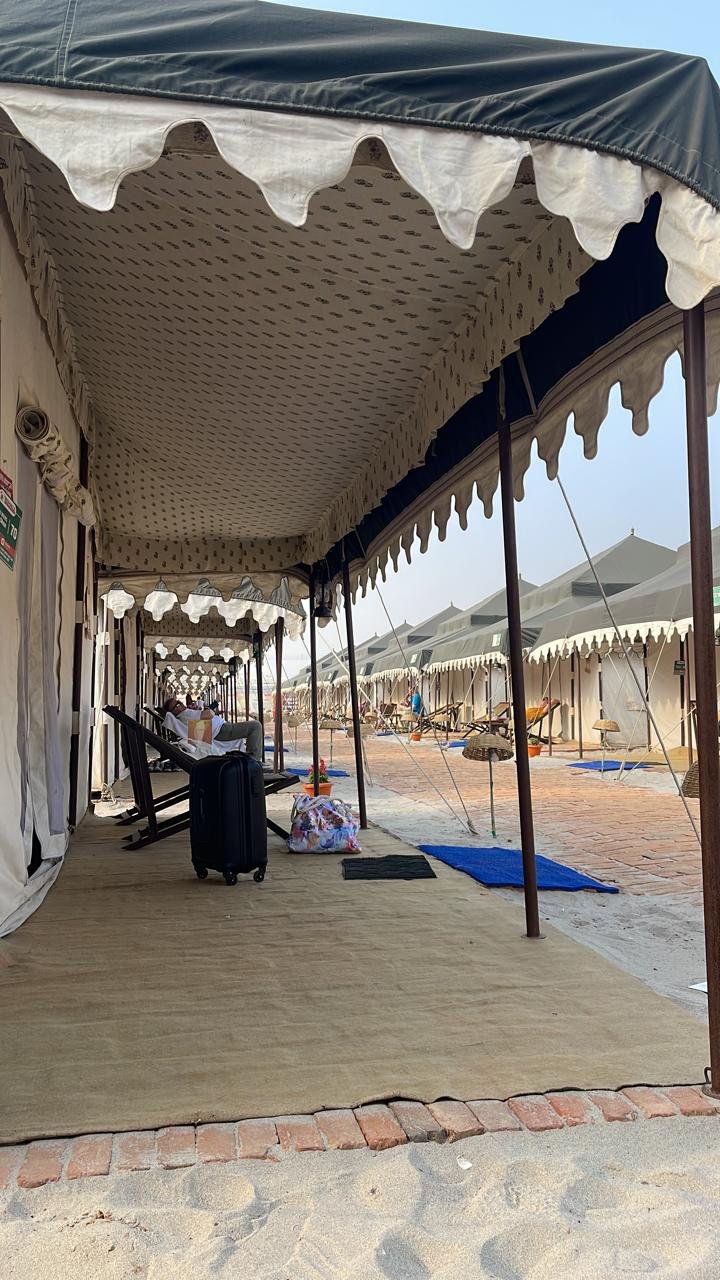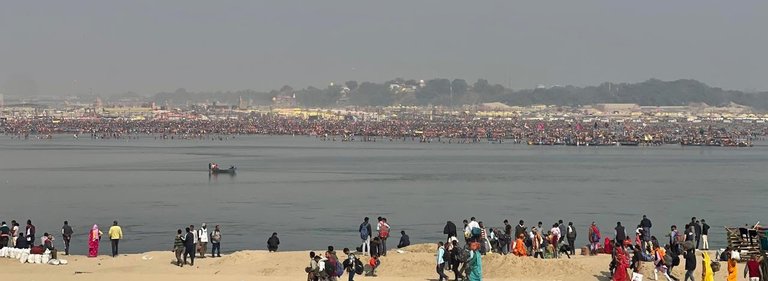Early last year, I found myself drawn to something I couldn’t quite define—a pull that would lead me and two of my school friends to the banks of the River Yamuna in January this year. We were headed to the Maha Kumbh Mela, a spiritual spectacle that happens once every 144 years.

None of us really knew what to expect, and maybe that was part of the allure. We had booked five nights at a luxurious riverside camp, far removed (we thought) from the chaos of the main event. It was serene. The river shimmered under the sun by day, and by night, the temperatures dropped sharply, turning the air crisp and biting. The food was simple, hearty, and comforting. Our mornings started easy, filled with conversations and endless cups of coffee. It was a quiet beginning—almost deceptive in its calmness. Why were we there? Simple: curiosity.

We rested for a day, and the next morning we realized, that beyond the safety of our well-maintained camp, a different world awaited. As we stepped out, we were swallowed by a wave of humanity. There were people everywhere. Waves and waves of them. Our goal was to visit the Akhada area—a place where the revered Naga Sadhus and other ascetics reside during the Kumbh. To reach it, we had to cross the Yamuna via a pontoon bridge.
Except—we’d made a crucial mistake. Unknowingly, we had arrived during an auspicious bathing window, a time when millions gather to take a holy dip in the Ganges. All access bridges across the river were closed. Suddenly, our easy plan turned into a logistical nightmare. The only way across was to walk. And walk we did—almost 14 kilometers, weaving through closed streets, blocked roads, and tightly packed lanes. The town was sealed off to vehicles, but in true Kumbh fashion, nothing is impossible. We found a group of local bikers willing to ferry us part of the way for a fee—until the police checkpoints brought the ride to a halt. The rest of the journey was on foot, through dust, noise, and the overwhelming presence of people. The sheer scale of it all made us consider turning back multiple times. In fact, one of our trio did just that—overwhelmed by the crowd and chaos.

The two of us pressed on. We had started our journey after breakfast. It was 5 PM by the time we reached the Akhada site. To our surprise, it was just starting to get too crowded. That’s when it hit us—the sea of people we had been pushing through all day hadn’t come to visit the Akhadas. They had come to do something far more sacred: to take a dip in the holy Ganges. As the sun began to set, the day’s exhaustion faded just a little. We were finally there, and this was just the beginning.
To be continued in Part 2...
Thanks for reading.


 -
-